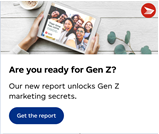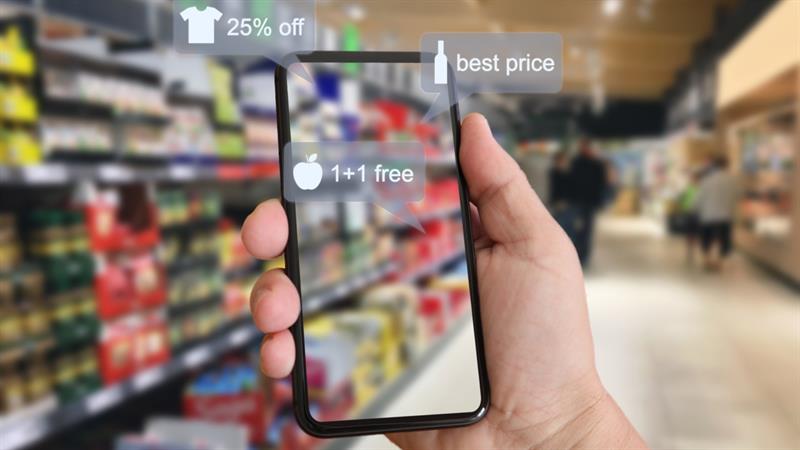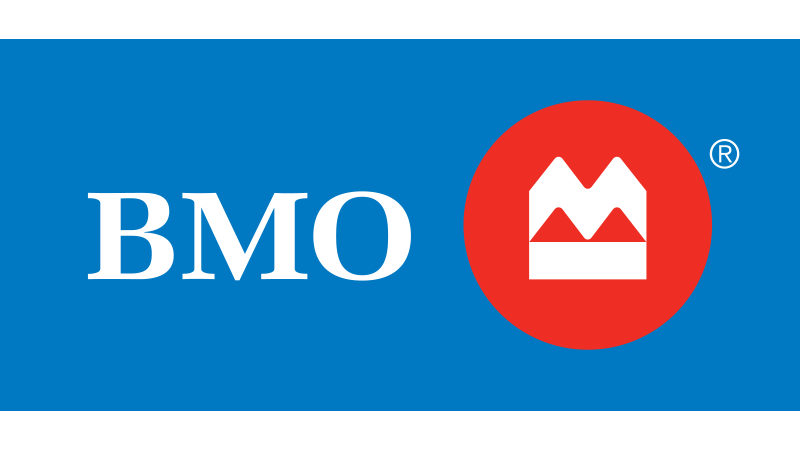Where do we go from here? The Growth imperative
Changing customer needs and how businesses must adapt to survive.
[ Part 1 ]
The New Path
Where do we go from here? That is a question being asked by everyone, everywhere. When will it get back to normal? Will it get back to normal? What will that new normal be?
With the dawn of a new decade, much has been written about the key business imperatives organizations will need to consider as they begin to chart the next phase of growth for the 20s and even the 30s. With the onset of the Covid-19 global pandemic – business priorities immediately shifted from “how will we grow?” to “how will we survive”?
As the best medical and government leaders have indicated, we will get through this period and we will come out the other side. However, society will be different, it already is, and it is incumbent on leaders to chart a new path. Whether a large corporation or a small business, NGO, Not For Profit, Government, Service, Agency, or Athletic Group; new thinking and new approaches are required.
As businesses and customers rebuild their daily routines, how they live and operate, the challenges from the global pandemic have permanently altered the decisions consumers make. One thing everyone does still agree on is the power of the consumer. Consumers have the unique ability to choose, walk away, protest, disrupt and advocate! What has changed is that these same people can voice their pleasure or displeasure faster and on a much wider and visible scale that will impact your competitive position.
Today’s and future generations are more focused on organizations that align with their values and the overall impact on society. These individuals are both your customers and your future employees. Profit at all costs is no longer a winning strategy – sustainability, societal contribution or a broader social purpose combined with growing shareholder value is what will drive the organizations of the future. This has never been more evident than what we see in the daily news. Great stories and organizations making a pivot – for a great societal good, to stop the spread, flatten the curve and keep people safe. These principles of social benefit and sustainable commercial growth do not need to be at odds with one another. A focus on what matters to your customers is the path to greater revenue and growth
The challenge for every business is to understand what’s unique about your target audience. In today’s competitive environment having intimate knowledge of what is important to them, how they want to interact with you, and ultimately how to meet their needs is critical for success. Getting this right will drive deeper affiliation to your brand, products and services and ultimately greater profits. How can you ensure your customers keep buying your products or services in the years ahead?
As we reflect on our current situation and plan for the future, business will rebound but organizations will be forced to re-evaluate their entire product and customer strategies. What you thought was a critical success factor yesterday, may no longer be relevant tomorrow. It will be a new normal. The elements of this model can serve as a roadmap to prepare your business for the other side of the curve and find the new path.
There are 4 defining elements of a successful and sustainable business model needed for your business to survive and grow in 2020 and beyond.
- Purpose
- Presence
- Personalization
- Protection
These new 4Ps will set your business apart and help to differentiate your organization from those who fail to re-define themselves in this new business paradigm. More importantly they will drive affinity from your customers. There have been other articles on the new 4Ps of marketing yet none have captured what I believe is most important for today’s C-suite executives, its not about just marketing, these are the new 4Ps of business and will deliver business success.
Each element of the model has its own opportunities and challenges. Each on their own are important – however without true integration between them, your business will not succeed in the long term.
[ Part 2 ]
Purpose
Who you are and how you operate should permeate everything you do as an organization. From corporate social responsibility, hiring and compensation to product design, development, manufacturing and marketing – all are impacted and shaped by an organization’s purpose.
It has been statistically proven that organizations with a strong sense of purpose are more than twice as likely to have above-average shareholder returns. Organizational Purpose has also been correlated strongly with ten-year total shareholder return. Purpose has never been more important that it is today.
Purpose is deeper than a Mission or a Vision statement. While both are important to articulate the goals of the organization, it focuses your resources on the reason you exist as a business. Everyone in the organization must be aligned to your purpose – it is not enough to have a corporate social responsibility program yet have manufacturing process or suppliers that are not in sync with that program. The Product head needs to interact directly with the Chief Sustainability officer, the CMO, legal, compliance, risk and even the PR group to help influence and shape the products and services of the organization, how they are produced and distributed.
Integrity matters – it is simply not good enough to put your purpose on your organization’s website or put a poster in your locations and lunchrooms. It must be lived within the organization. It must impact all aspects of your business and needs to drive the decisions you take. If you don’t have the integrity to stand behind your purpose it will fail. Does who you are and what you stand for change as a result of the global pandemic. At the very least, as a business leader, it should give you pause for thought. The outcome may be the same but the process of review is critical.
KEY QUESTIONS:
- What does your organization stand for?
- What is important to your customers?
- What is important to your employees?
- How do you align what your customers want, what your employees deliver and what your organization stands for at a broader level?
- How are you as an organization driving an emotional connection with your products and services?
[ Part 3 ]
Presence
Historically we have asked the question, “How do I find more customers?” The future is making sure your customers can find you. Presence is the second key element of driving revenue growth.
It used to be you would open a store and wait for customers to show up. Business evolved, advertising, word of mouth, and public relations were all key elements of the marketing mix designed to help your customers find you.
Today, presence and in most instances, omnipresence is what differentiates successful organizations from ones that don’t make it. What is paramount, is knowing the best avenue to reach your audience with the right message at the right time. Connecting with your customers must be on their terms.
Think about your purchase behaviours today vs ten years ago, vs ten weeks ago. Where do you go first? Who do you check with? Where do you get your trusted information? In fact, most people leverage more than 10 different sources for pre purchase, buying, fulfillment and post purchase support. Can you name them? Likely not and even more likely you don’t have a presence in those channels so that your customers can find you.
Presence means an integrated approach of offline and online, traditional and non-traditional, bricks and mortar, contact centre and digital - the key is “and” not “or”. Establishing your footing in these channels should be a mixture of strategy and trial and error. Cost and barriers to entry will determine how fast and how often.
The new technologies of the last decade have created a requirement to interact with consumers on their terms, where they want. That means being on many digital platforms. This should be always on and always changing, real time test and learn to drive deeper connections and to drive sales. What does it mean to be “digital”? Digital is not just display advertising – it includes; SEM, SEO, display, video, livestream, explainer content, augmented reality, podcasts, voice interaction, chat, messaging and key social channels like Facebook, LinkedIn, Instagram and Twitter and experimental channels like TikTok – all with the ability connect to your customers. Traditional media continues to deliver on customer influence and TV, radio, yes radio and streaming content will be a key part of the mix to find your customers. Finally, “digital” also includes the ability to shop, purchase and interact, directly with your organization – through the web, apps and messaging. Just like physical channels, your digital presence must bring your brand to life and connect directly to your purpose.
“The Store is Dead!”, is an often-touted mantra that has driven bad decisions and short-sighted approaches at cost reduction and ignorance of how consumers make purchase decisions. Many organizations are shuttering stores – but did they have the right store experience, in the right location?
“The Store is Different!” is the new mantra. In-person retailing has changed forever as a result of the pandemic, but it will continue to be important. Stores do still matter. People crave the physical and the need for human interaction. However, large retailers have realized they need fewer but more effective stores that are destinations. Online only retailers are opening physical stores. Amazon is partnering with key organizations to make personal pick up easier. Grocery stores will drop your groceries in a secure locker at your local transportation hub. In person shopping is now an experience. The global pandemic will result in a further evaluation of the scope of an organizations’ physical network. Digital is a key element of the physical store experience and the physical store supports both contact centres and on-line for customer experience, including returns, exchanges, complaints and fulfillment.
Just as organizations evolve on the digital front, adapting to changing consumer preferences, the same is true for the physical world. Far too many organizations believe the answer is one or the other - physical or digital. The truth is that they must both evolve together to deliver the full consumer experience. Seamless and frictionless interactions are essential to make sure the offline and online worlds deliver on customer expectations.
KEY QUESTIONS:
- What is that customer journey like in your organization?
- What is the integration between your offline and online processes?
- How do your multiple channels interact with each other at each customer touchpoint?
- How do you ensure your purchase experience is built from the customer out?
- What is the experience for customers who move between different parts of your business?
[ Part 4 ]
Personalization
This has been called the big data era – but we have more data than insights and more raw computing power that we don’t or can’t leverage. It is becoming increasingly difficult to put more messages in front of consumers, with consumers being overwhelmed by the volume of communication. This has led to ineffective strategies to target them and a less than fulfilling experience.
Relevant, meaningful, timely, transparent is critical to reaching your customers. The majority of customers indicate that as long organizations use the data they have to help them in a meaningful way it results in an enhanced experience and a deeper relationship. Getting to the heart of what the customer wants and delivering a product or service that recognizes that, then communicating in a way that feels unique to that customer is what sets great organizations apart. Personalization is a combination of two distinct but complimentary strategies.
The first is “the what” – what is offered is influenced by a number of factors including customer level pricing; product customization on a number of different design and manufacturing features; behavioural segmentation and alternative distribution strategies. The “what” should address the individual needs of each customer
The second is “the how” – how will your organization deliver a unique message about “the what” to the consumer. The how is about understanding how consumers want, expect, and respond to messaging about the “what”. Presence is what affords you the best opportunity to deliver the “what” message to your customers in a relevant way and through relevant channels.
KEY QUESTIONS:
- How are you leveraging your data to drive better customer insights?
- What makes each customer unique and do you then deliver that uniqueness to them?
- How is your organization leveraging AI and machine learning to drive deeper personalization?
- How can you integrate your data with data from other sources to drive deeper personalization?
- What feedback mechanisms are in place to enhance your customer’s satisfaction?
Where we are today is just the beginning. As we harness the power of AI and machine learning, the unique needs, preferences and experiences of each customer will drive exponential growth in options and choices. Personalization will be driven by not just your data but also the data of others, as data aggregation and integration will drive even deeper personalization.
[ Part 5 ]
Protection
The final and most critical element of this entire model is Protection. Protection is the safekeeping of your client’s data, their wellbeing, their privacy and preferences and your reputation. Data breaches seem to happen every day in all business including corporate, not for profit and government.
In 2019 almost 7.9 billion records, including credit card numbers, home addresses, phone numbers and other highly sensitive information, have been exposed through data breaches. Customers’ rate security and protection as one of they key elements in a business relationship.
Both small and large organizations need to make the safekeeping of their data a top priority. Historically this involved simple steps like data backup to an alternate storage vehicle. Today safekeeping includes cloud storage, archiving, disaster recovery planning and the shift to a model where organizational data is continuously protected in real time vs a batch process or one-time duplication.
What makes this an even great imperative is the rise of AI and machine learning. What your organization does with the data it collects, how it uses it, stores it and even sells it will be a priority for the customers who believe it is theirs to control. Customers want data transparency and data access. They want to know what you have, how you plan to use it and they want a say in what happens. Organizations will have to play a greater role in educating their customers about policies and programs that leverage individual’s data.
Finally, as the Pandemic has demonstrated, organizations need the physical protection of their employees and customers at the heart of their business. Whether it be manufacturing, food safety, financial services, health care or supply chain management – all require a safe, healthy and protected workforce. Customer and Employee business continuity planning is best practice for the best organizations. It is a core competency and those with that at their core are able to pivot and adjust to changing business realities. However, this is more than physical well-being, this is being truly there for your employees and customers through the good times and the tough times. How will your organization stand by both employees and customers? Are you prepared to answer this question: In good times, when the consumer has a choice, will they choose us based on our actions in bad times?
Fail to Protect your customers and Purpose, Presence and Personalization don’t matter.
KEY QUESTIONS:
- What do you do with data you collect and how do you keep it safe?
- What customer and employee access permissions do you have?
- Are you prepared for a data breach?
- Is data and customer protection a Board level priority?
- What is the extent of your customer and employee business continuity?
If you can answer these questions confidently then protection underlies your business model – that bodes well for you. If you cannot – then prioritizing the protection of your business and customer information should be your top priority.
Business owners have all the tools to ensure they can attract, retain and grow their customer base. The unique aspects of the of the model have their own ability to support your business. However, as a business leader, focusing on the integration of these 4 critical factors of Purpose; Presence; Personalization; and Protection will ensure your business grows in 2020 and beyond.
This is a new normal – looking back to remember where we have come from and what we have learned combined with a new approach for a new world will determine the path forward and will set your organization apart.
About the Author
Chris Stamper is a former Senior Vice President with TD Bank. Chris held a number of progressively senior roles in a variety of areas across the bank including Marketing, Product Management, Operations, Contact Centres and Retail Banking
Chris was Chief Marketing Officer for TD Canadian Banking and was responsible for strategic marketing planning for TD Canada Trust Personal and Small Business Banking, Wealth and Insurance. In addition, Chris led the Corporate Marketing function at TD, accountable for all aspects of marketing including Customer Experience and Engagement; Community Relations and Donations; Corporate Social Responsibility and Environment; Digital and Social Marketing; Marketing Data and Analytics; Brand and Sponsorship. Chris was most recently the Senior Vice President, Metro East Region for TD Canada Trust, and was responsible for overseeing TD’s retail operations in in the Metro Toronto East area, including more than 180 Branches, 1.8MM customers and over 4000 employees.
Chris actively volunteers with the Canadian Marketing Association and was Chair of the Board of Directors. Chris is on the Board of the Canadian Baseball Hall of Fame and Museum, and an Advisor to the Awesome Music Project.
Chris received his undergraduate degree from Western University, his MBA from the University of Toronto Rotman School and completed the Advanced Management Programme at Insead.
Chris lives in Oakville, Ontario with his wife Karen and is a part time empty nester with his two children Johnathon and Mackenzie.






































